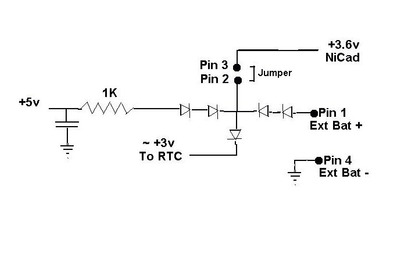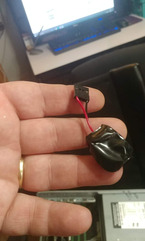First post, by Deksor
- Rank
- l33t
I just started experimenting with solutions to fix old motherboards batteries but I encountered several issues which may me wonder if it is as easy as some people may say it is.
For now I have tested this on only two motherboards, but both reacted more or less the same.
First we have this 12MHz 286 motherboard :


I tried both external and internal options (always CR2032 based).
So what's the problem you may say ?
Well the battery is brand new (I can measure 3.2V), but when adding a diode, the voltage drops ... and the RTC chip is only powered with 2.3V.
This is ok to save the BIOS features, but time doesn't tick at all. It's stuck the moment I stop the computer.
I managed to hack the circuit so the 5V current just never tries to go in the battery at all, rendering the use of an extra diode useless, and the RTC chip is now powered by 2.7V. This is enough for the time keeping ...
But this also means the lifespan of the timekeeping will be shortened, right ?
The same problem appears with external battery holders, but fortunately the battery holders I bought can fit 2 batteries, so the RTC chip ends up being powered with 5.5V. A bit overpowered I think, but nothing to worry about I think.
Then I tried it on my Abit FU333


But then angain, the same problem appears ... 2.4V in the RTC circuit ... And here I can't think of a way to even "hack" it to spare an extra diode ... Meaning I can only rely on using two external CR2032.
Have anyone experienced this problem ? Do you have any ideas of how to overcome this (other than putting a new varta battery) ? I tried super capacitors in the past, but the time keeping problem appeared too very quickly.
Trying to identify old hardware ? Visit The retro web - Project's thread The Retro Web project - a stason.org/TH99 alternative

